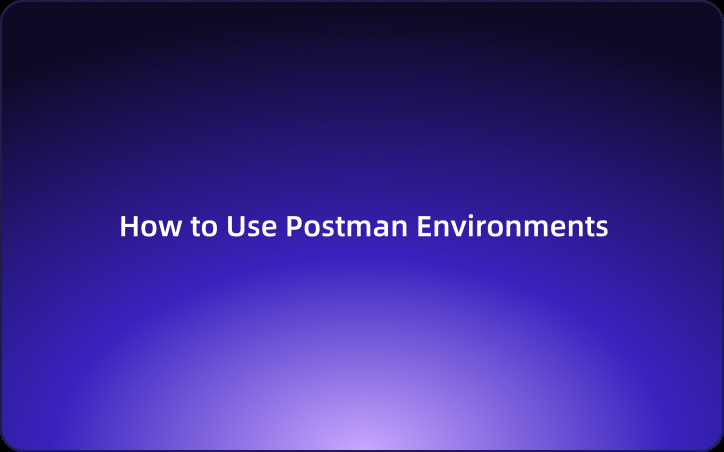User Guide: How to Use Postman Environments
When using Postman to enhance API development efficiency, leveraging the Environment feature is essential. This article provides a thorough explanation of how to use Postman's Environments functionality.
When using Postman to enhance API development efficiency, leveraging the Environment feature is essential. This article provides a thorough explanation of how to use Postman's Environments functionality.
What is Postman Environment?
The Postman environment is a set of variables that can be used in requests. It allows you to group related settings and variables and manage them centrally.
Specifically, the Postman Environments includes the following elements:
- Environment Variables: Variables that represent the values set for each environment. For example, the base URL of the API and authentication tokens can be set as variables.
- Global Variables: Variables relevant to the entire environment that are shared across different environments. This allows for the use of common setting values in various environments.
- Local Variables: Variables that apply only to specific requests or collections. Local variables are used only within specific requests, so they do not affect other requests.
Environments can be created, edited, and managed within the Postman user interface. When developing and testing APIs, appropriate environment settings allow for switching between different environments, enhancing sharing and reusability.
Next, I will provide a detailed guide on how to use Postman's environment features.
Using Postman's Environments Features
By using Postman's Environments feature, we can easily switch between different environments and toggle between development and production environments, which enhances the efficiency of API development.
Creating an Environment in Postman
To create a new environment in Postman, follow these steps:
Step 1:Select "Environments" from the left-hand menu and click the "+" button.
Step 2:Specify the environment name and any required fields. You can also set environment variables later.
Step 3:Click "Save" to save your environment.
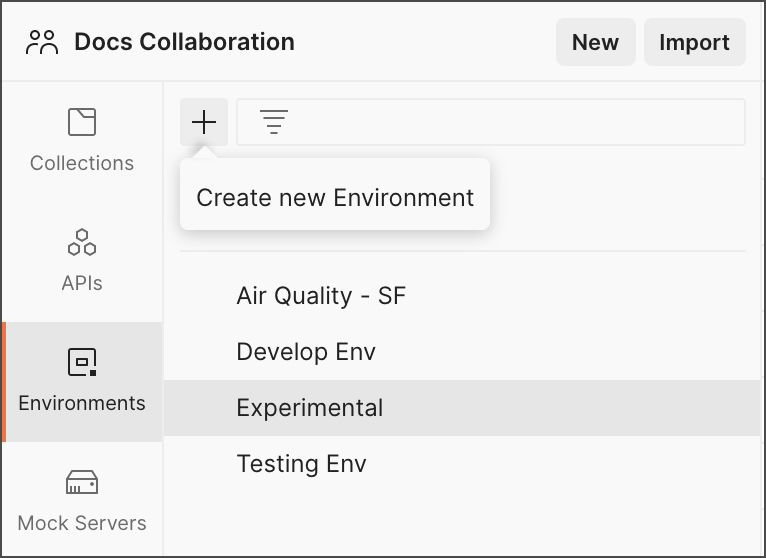
Adding Environment Variables in Postman
When creating an environment in Postman, you can add environment variables to that environment.
Step 1:Select "Environments" from the left menu and switch to the desired environment.
Step 2:In the "VARIABLE" form, enter the variable name, variable type, initial value, and other relevant details to add an environment variable.

Step 3: Click "Save" to save the changes.
Selecting an Environment in Postman
In Postman, you always have multiple environments (e.g., testing, production, etc.) to choose from, depending on the current phase of your project.
Step 1: Click on “Environments” in the left sidebar of Postman to view all available environments.
Step 2: Click on the environment you want to use, and check the box to set it as your current environment.
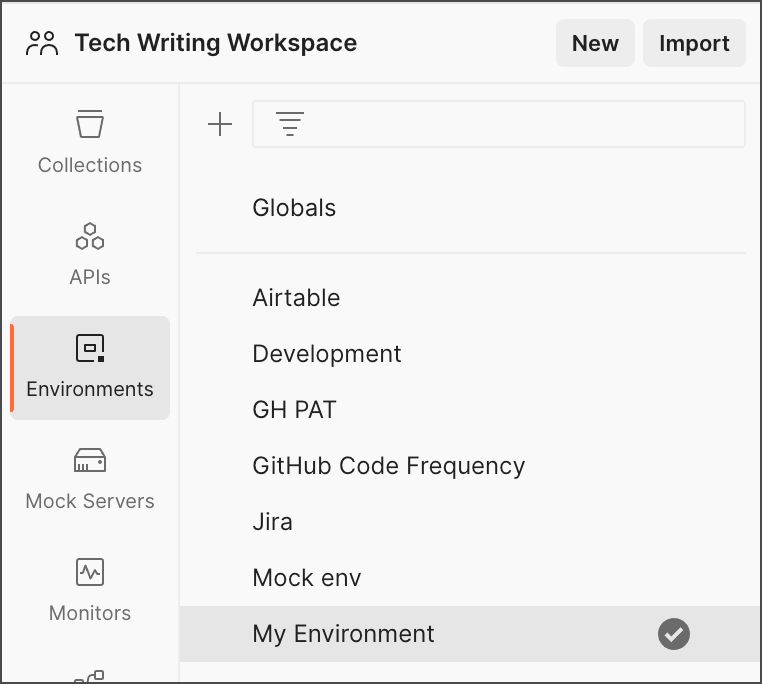
Step 3: Click the "Environment Quick Look" icon near the environment selection to quickly check the basic information of the selected environment.

By selecting an environment, you can directly use variables from that environment when sending requests.
Managing Environments in Postman
In Postman, you can manage existing environments by sharing, moving, duplicating, deleting, downloading, and controlling access to them. You can also remove shared environments from your workspace.
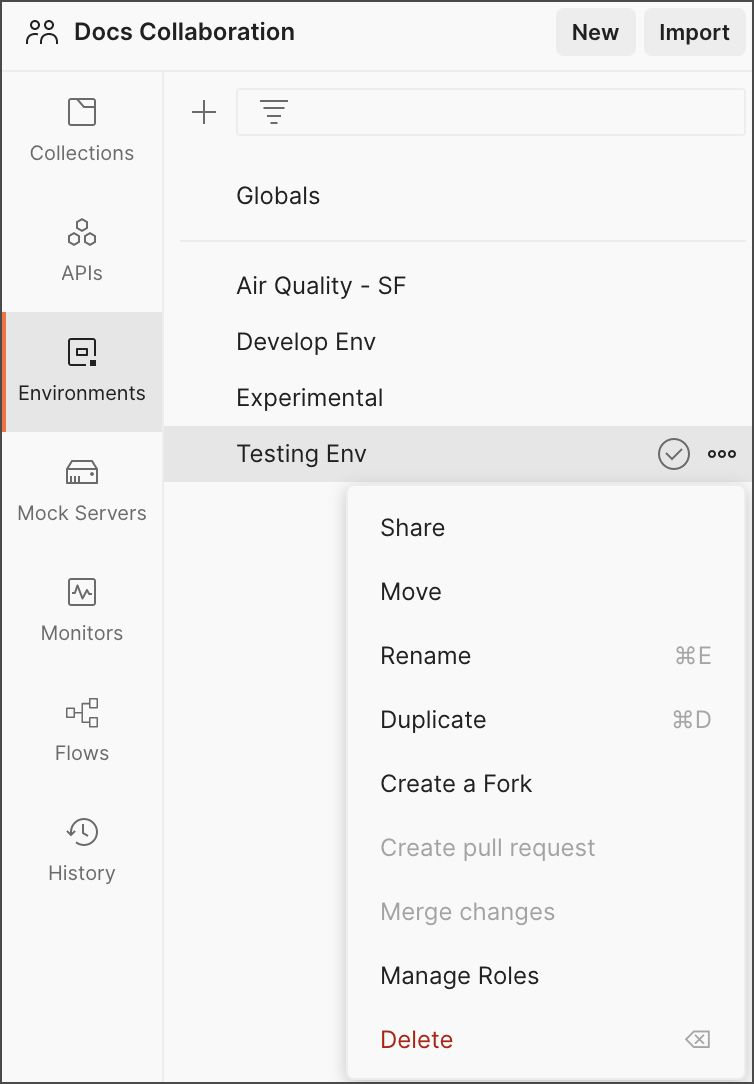
Easily Manage Your Environment with EchoAPI
EchoAPI is a more powerful and user-friendly API management tool than Postman. With EchoAPI, you can easily set up environments and variables. It also offers excellent collaboration features, significantly enhancing team productivity in development.
Easily Create and Configure Environments
Creating and configuring environments using EchoAPI is very intuitive, as shown in the image below. You can also easily add and modify variables on this screen.
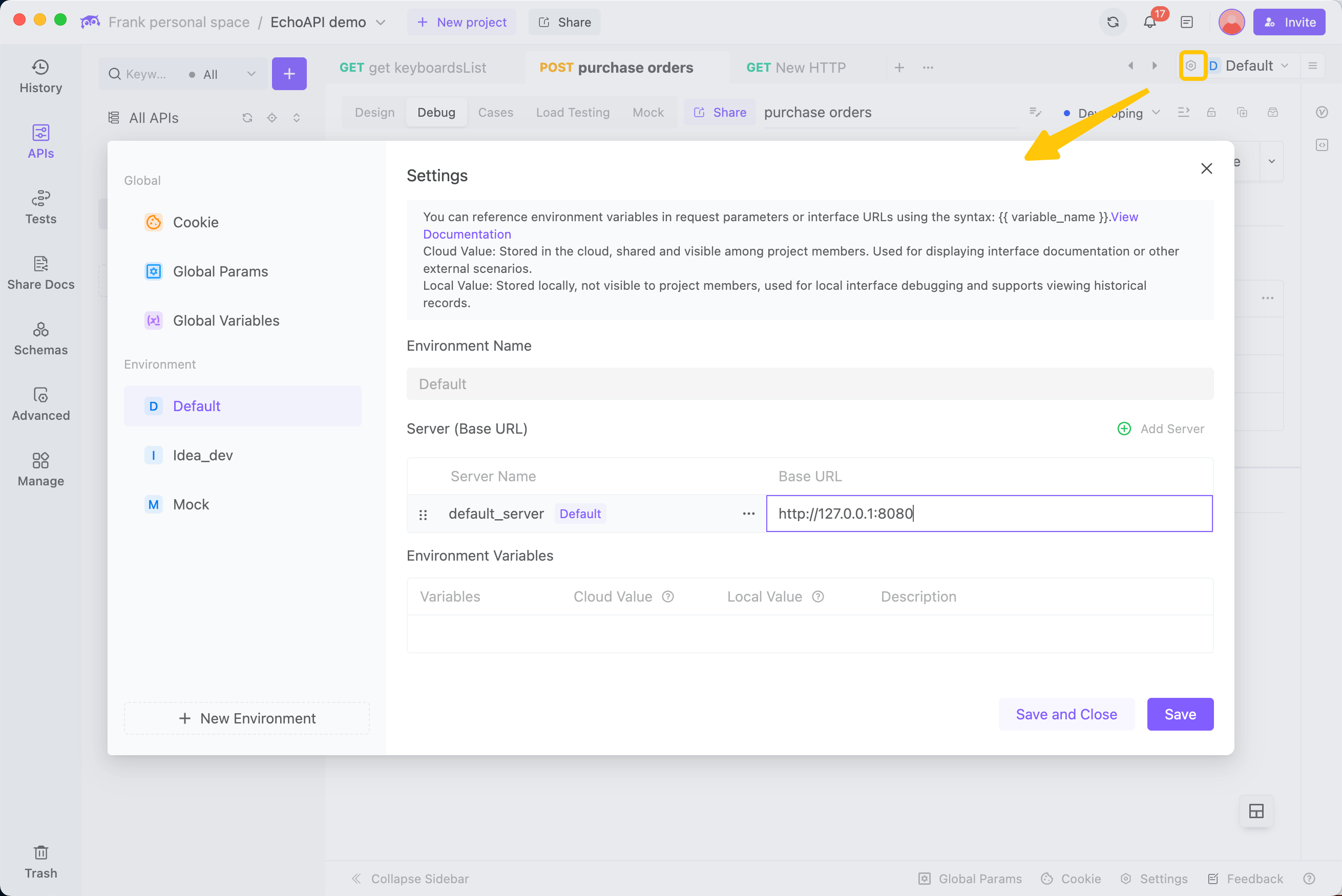
Switching Environments with One Click
Switching environments is also very easy. Simply click the dropdown list in the top right corner, and with just one click, you can switch to the desired environment.
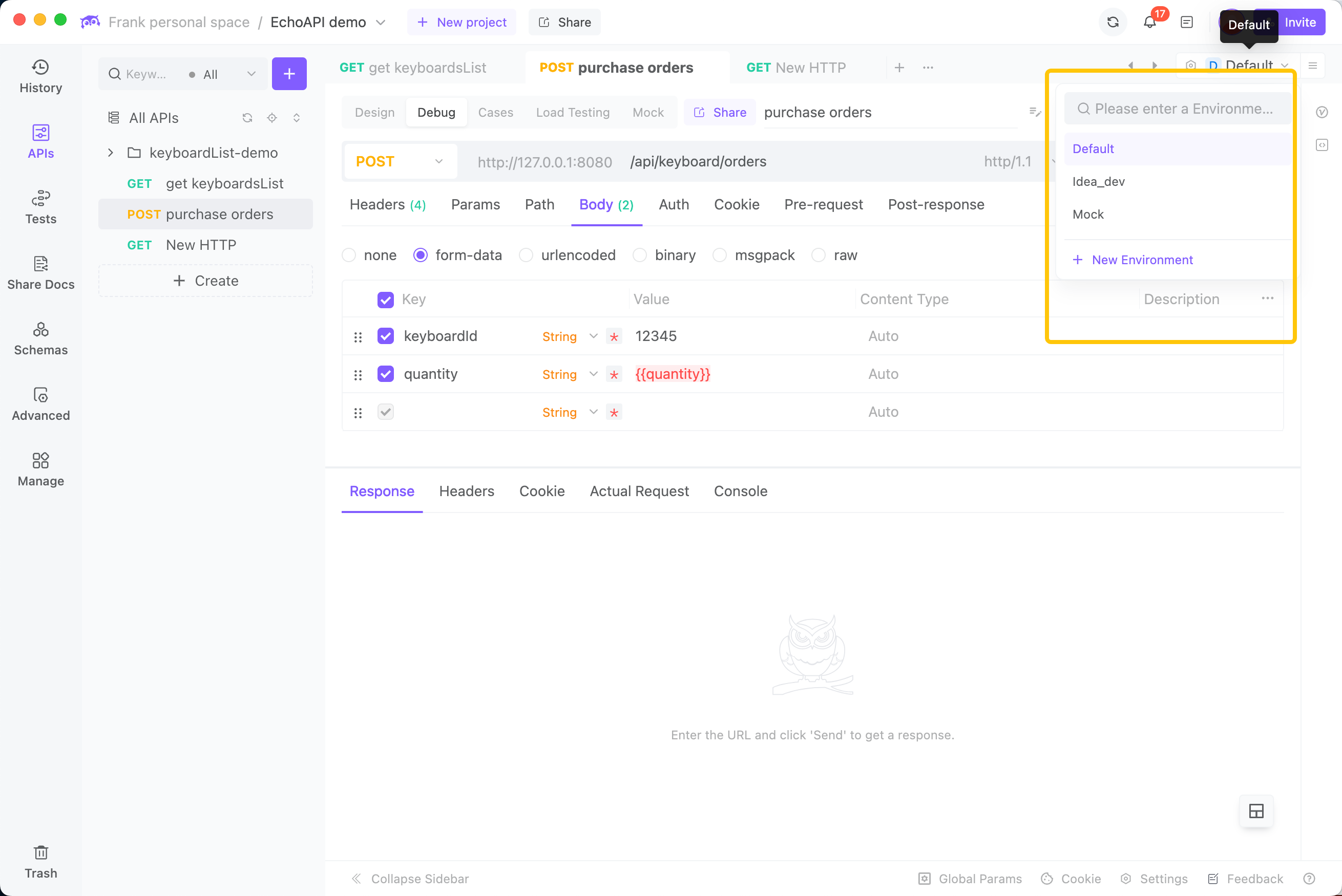
Fully Compatible with Postman Environment
Step 1: Use Postman's "Export Collection" feature to export the complete data from the collection.
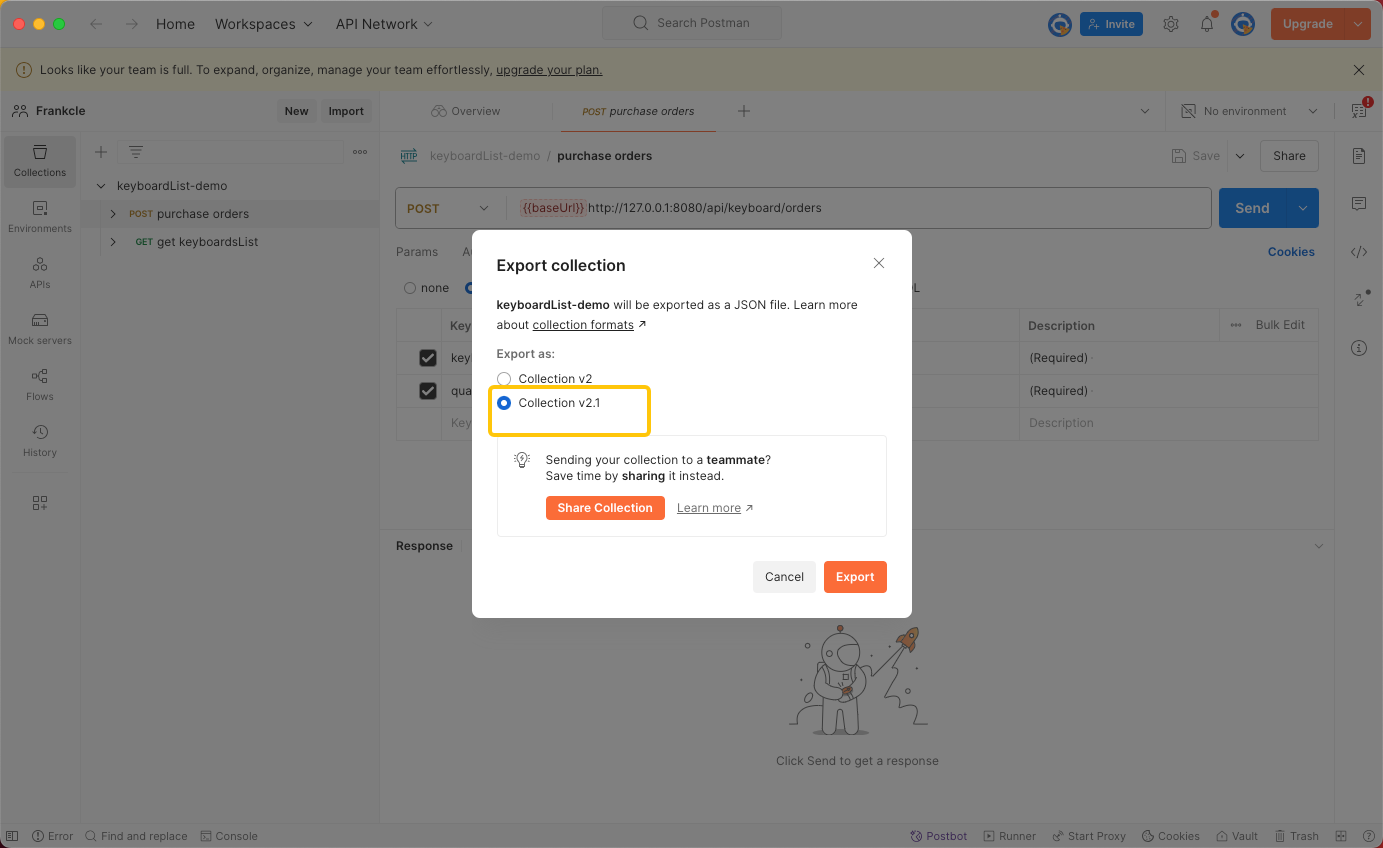
Step 2: EchoAPI supports various formats. To import Postman collections, select "Postman," allowing you to seamlessly import your Postman data into EchoAPI.
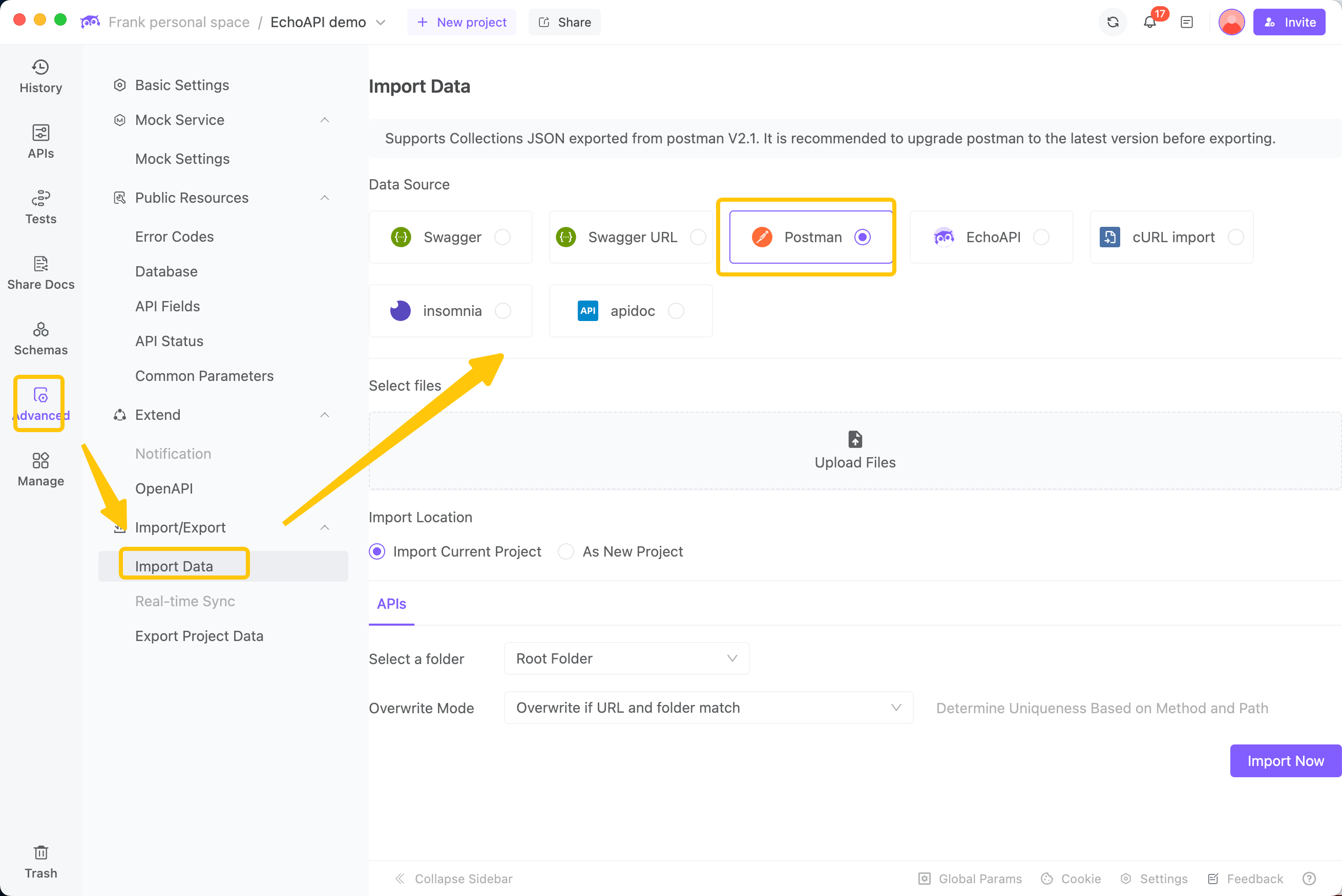
With these steps, you can easily set up environments in Postman to enhance your API development workflow.









 EchoAPI for VS Code
EchoAPI for VS Code

 EchoAPI for IntelliJ IDEA
EchoAPI for IntelliJ IDEA

 EchoAPl-Interceptor
EchoAPl-Interceptor

 EchoAPl CLI
EchoAPl CLI
 EchoAPI Client
EchoAPI Client API Design
API Design
 API Debug
API Debug
 API Documentation
API Documentation
 Mock Server
Mock Server




